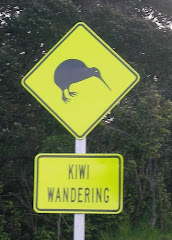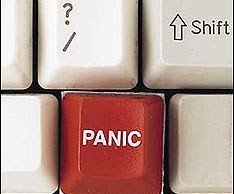
We had taken mum and dad to Oudong, the old capital and the centre of Buddhism in Cambodia, when they came in February so it was only fair my sister and her family did the 500 step trek to the temple at the top as well. We left fairly early in a, usually futile, bid to beat the heat. The kids were kept entertained counting tuktuks and increasing numbers of people on a single motorbike.
'You nephew?' said Chunthy, our driver, later that week, 'he talk SO much!'
On pulling into the Cambodia Vipassana Dhura Buddhist Meditation Center at the base of the hill it became obvious we had stumbled on a special day. There were people everywhere. Instead of the relative silence of the last visit the air was filled with the amplified sound of dueling dhamma lessons, the smell of burning incense and lotus buds. The grounds were filled with women dressed in 'wat clothes', white lacy long sleeved tops and straight long silk skirts in different variations of sundays colour-plum or the standard default- black.

We walked around the huge ceremonial pool, marvelled at the gold lady and her reptilian steed and the strange arrangement of characters under the tree with the silver leaves.

We strolled past the open hall, full of shaved headed nuns all in white and mostly women worshippers, that was leaking the rhythmic chanting. We slipped past the many food vendors who held out bamboo tubes of sticky rice and colourful woven trinkets. We walked towards the stilted house, the kodi, that holds Sam Bunthoern, the mummified monk, and we grew silent. We happened to reach the room at the top of the stairs, where Bunthoerns body lies in a glass case, during a lull and it was empty apart from a couple of orange robed monks who smilingly eyed my sisters young children as curiously as they returned their gaze.
'His eyes are open'
'He's a bit wrinkly'
'Is he real?'
It's not often you get to see a 'real live' mummy.

Back out on the balcony we noticed the doors of the massive building opposite, that were firmly shut on our previous visit, were open so it was back down the stairs of Bunthoern's shrine and up the wider stone stairs of the much more imposing temple building. With shoes off we stepped over the threshold and onto a cool clean tile floor. The inside of the huge hall was quite simply breath taking.

All the walls and the ceiling were intricately painted with scenes of Buddhas life, laid out in squares like a spiritual comic strip, except for the end wall which held a larger than life bodhi tree, the backdrop for a ginormous green jade (?) buddha.

More nuns were sitting to one side of the Buddha. One stood up and walked slowly over to where we were at the edge of the kneeling mat.

She indicated that for a small donation she would bless us and we obliged, after all how often does one get the chance to be blessed at the feet of one of the biggest seated Buddhas I have ever seen, by a tiny bald headed nun in the ancient capital of Cambodia.

We sat for a while, on our knees, afterwards and drank in the increasingly busy scene before us wondering what they were 'celebrating'.
Back outside we asked our driver.
'The last day of the rainy season.' He offered.
A bit early we thought but the season this year, as with much of the Asian world, HAS been a bit extreme. Maybe a bit of wishful thinking WAS in order.
Before climbing the 500 steps to the view we investigated a new reclining Buddha around the back of the Temple Hall.

He serenely lay, with head on hands, facing the direction of the Jade Buddha oblivious to the inspection of tiny hands.
We decided to take the back route up (the path
we had been unable to find the first time) Phnom Oudong past some ancient stupas that allegedly contain the ashes and spirits of former Kings. This time the steps were less steep and the assent easier, broken by some stupa exploration.

When we finally reached the top it was crowded with local Khmer but we managed to squeeze into a spot to marvel at the view which was a lot more water logged than the last time we saw it.

We took the kids underneath to the room with the hundred buddhas before descending the much steeper and more crowded steps at the front of the temple to the sounds Cambodian hiphop, from a portable boom box, into the carpark where Chunthy was waiting.

It wasn't until we got back to Phnom Penh that I was worked out it was the first day of Bonn Kathen (Kathin), which begins 15 days exactly after the final day of P'chum Ben, that we had witnessed. Bonn Kathen is a 29 day period at the end of vassa, the month of confinement of the monks (which includes P'chum Ben). During Bonn Kathen, which means 'offering saffron robes', monks exchange their old robes for new ones donated by members of neighbouring wats. It has the affect of not only earning merit for both parties in the exchange but also for strengthening and nurturing ties within the wider community. The donations can include not only new robes but also money to help in the maintenance of the wat, the grounds and the school. Apparently the
merit points gained during this transaction are quite specific.
For the Bhikkhus, a fully ordained male monk, the merits include:
anamantacaro - the Bhikkhu can go anywhere without telling the other Bhikkhus asamadanacaro- the Bhikkhu can go anywhere without taking Tricivara (his robes) with him kanabhojanam- the Bhikkhu who serve the foods can call the name of those foods (in other words he can ask for what he wants to eat)
yavadatthacivaram - the Bhikkhu can keep or use the civara without vikabba and adhitdhana (determination and resolution ie being mindful about it)
yo catatthacivarubbado so ne sam bhavissati - the civaras (robes) happened in that avasa (monk house) will be for those bhikkhus (in other words they dont have to share their new robes with the other monks.
The donor too gets spiritual credit:
susanthanara - to have complete organs (I think that means in the next life!)
surubata - to be good looking or handsome
suvannata- to have good colour (not sure whether this is to do with health or with having the much sort after pale skin tone)
adhibaccambarivaro - to have many servants
and susurata- to have a sweet sound
And in addition the person who makes the 'right clothing' will 'avoid to be born' in the four least desirable places in the next life; the place of ghosts, of evils, hell and the place of wild animals (I think that means as a wild animal)
Plus the organizers of the ceremony are destined to be born into rich families.
















.JPG)






































